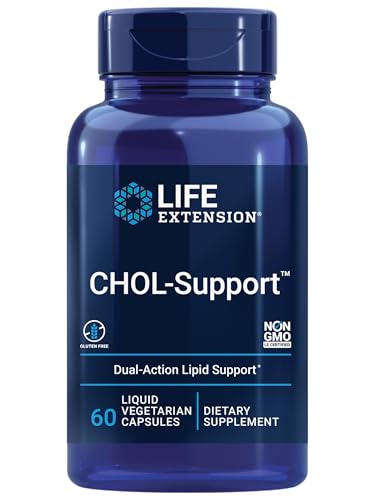Vitamin B5 (Pantothenic Acid)
Vitamins
Overview
- Pantothenic acid, commonly called vitamin B5, is a water-soluble B-vitamin.
- It serves as a precursor for coenzyme A (CoA) and the synthesis of acyl-carrier protein.
- Its primary purpose is to facilitate the enzymatic conversion of carbohydrates, fats, and proteins into usable energy.
- It supports the synthesis of fatty acids, cholesterol, and steroid hormones.
Benefits
- Energy metabolism: Adequate pantothenic acid improves the efficiency of the Krebs cycle, enhancing ATP production during exercise and reducing fatigue in athletes (e.g., a 2015 randomized trial in endurance cyclists).
- Skin health: Topical and oral pantothenate reduce transepidermal water loss and improve wound healing, with systematic reviews confirming benefits for eczema and acne.
- Cognitive function: Higher dietary pantothenate correlates with better attention and slower age-related cognitive decline, likely via enhanced neurotransmitter synthesis.
- Adrenal support: Pantothenate enhances adrenal steroidogenesis (cortisol, aldosterone) by providing CoA for cholesterol-derived hormone production.
- Lipid regulation: In vitro and animal data indicate that pantothenic acid reduces serum triglycerides and LDL-C when combined with other B-vitamins, though human data remain modest.
How It Works
- Pantothenic acid is phosphorylated to 4-phosphopantothenate by pantothenate kinase (the rate-limiting step).
- This intermediate is converted to coenzyme A (CoA) through a series of enzymatic reactions (phosphopantothenoylcysteine synthetase, phosphopantothenoylcysteine decarboxylase, and phosphopantetheine adenylyltransferase).
- CoA acts as an essential acyl-group carrier in the citric acid cycle, fatty-acid β-oxidation, and synthesis of acetyl-CoA for cholesterol and steroid hormone production.
- CoA also forms the prosthetic group of acyl-carrier protein (ACP) in fatty-acid synthesis and of the pyruvate dehydrogenase complex.
- By maintaining intracellular CoA pools, pantothenic acid ensures efficient transfer of acetyl and succinyl groups, supporting ATP generation, gluconeogenesis, and neurotransmitter biosynthesis (e.g., acetylcholine).
Dosage
- The U.S. Recommended Dietary Allowance (RDA) for adults is 5 mg/day (≈ 0.2 mg/kg).
- Clinical supplementation for metabolic or skin benefits typically uses 200–500 mg/day of calcium pantothenate, divided into 2–3 doses with meals to improve absorption.
- For athletes, 500 mg taken 30 min before exercise has been shown to reduce perceived fatigue.
- In dermatology, 300–600 mg daily for 8–12 weeks improves barrier function.
- Higher doses (up to 2 g/day) have been used in clinical trials without serious adverse effects, but chronic intake >5 g/day may cause gastrointestinal irritation.
- Pregnant or lactating women should not exceed the RDA unless directed by a healthcare professional; a common prenatal dose is 5 mg/day.
Safety & Side Effects
- Pantothenic acid is classified as “generally recognized as safe” (GRAS).
- Reported side effects are rare and usually limited to mild gastrointestinal upset (diarrhea, nausea) at doses >2 g/day.
- No known severe toxicity; the LD₅₀ in rats exceeds 5 g/kg.
- Contraindications are minimal, but individuals with a known hypersensitivity to calcium pantothenate should avoid it.
- Potential drug interactions include enhanced absorption of levodopa (via improved CoA-dependent metabolism) and possible reduction in the efficacy of some antibiotics (e.g., tetracyclines) due to altered gut pH, though data are limited.
- Caution is advised in patients with renal impairment when high-dose (>1 g/day) supplementation is used because of reduced excretion.
Chemistry
- Pantothenic acid (IUPAC: (2R)-2,4‑dihydroxy‑3‑[(3‑hydroxy‑4‑methyl‑2‑oxopentyl)amino]‑4‑oxobutanoic acid) has the molecular formula C₉H₁₇NO₅, a molecular weight of 219.24 g/mol.
- The molecule consists of a β-hydroxy-acid moiety linked via an amide bond to a pantoic acid backbone (a 2-hydroxy-3-methyl-butanoic acid) and a terminal β-hydroxy-acid side chain.
- It contains two hydroxyl groups, a carboxylate, and an amide, conferring high water solubility (≈ 30 g/L at 25 °C).
- Pantothenate salts (e.g., calcium or sodium pantothenate) are the common pharmaceutical forms, improving stability and bioavailability.
- The molecule is chiral; the biologically active is the (R)-enantiomer.
Sources & Quality
- Naturally, pantothenic acid is abundant in animal liver, kidney, eggs, and dairy, and in plant foods such as mushrooms, avocados, and whole grains.
- Commercially, it is extracted from fermentation of Corynebacterium or Bacillus species, or chemically synthesized from β-alanine and pantoic acid intermediates.
- High-purity calcium pantothenate is produced by neutralizing pantothenic acid with calcium carbonate, yielding a stable, water-soluble powder.
- Quality metrics for supplements include ≥ 99 % purity, absence of heavy metals (≤ 10 ppm lead), and verification of the (R)-enantiomer through chiral chromatography.
- Good Manufacturing Practice (GMP) certification and third-party testing (e.g., USP, NSF) help ensure consistent potency and safety.
Where to Buy Vitamin B5 (Pantothenic Acid)






Affiliate Disclosure: We earn a commission if you purchase through these links at no additional cost to you. This helps us maintain our research and provides you with the best supplement information.